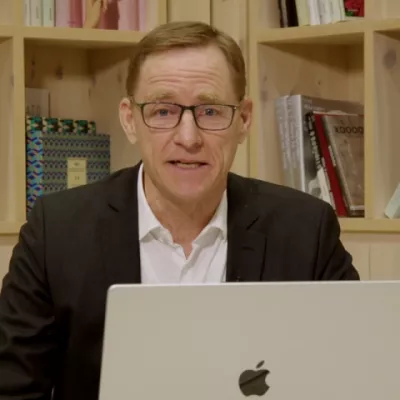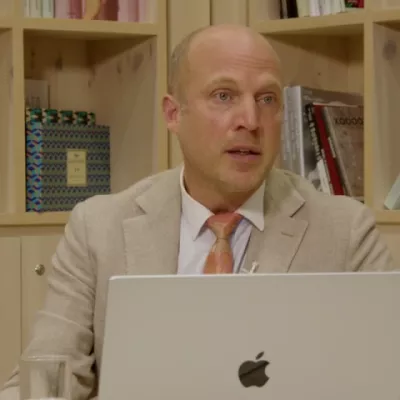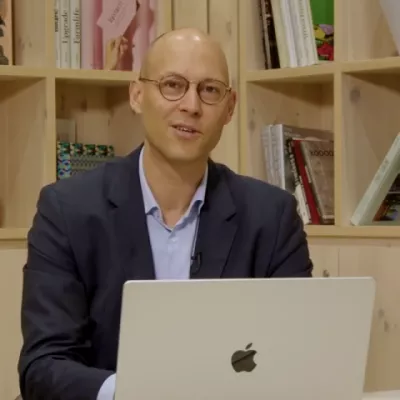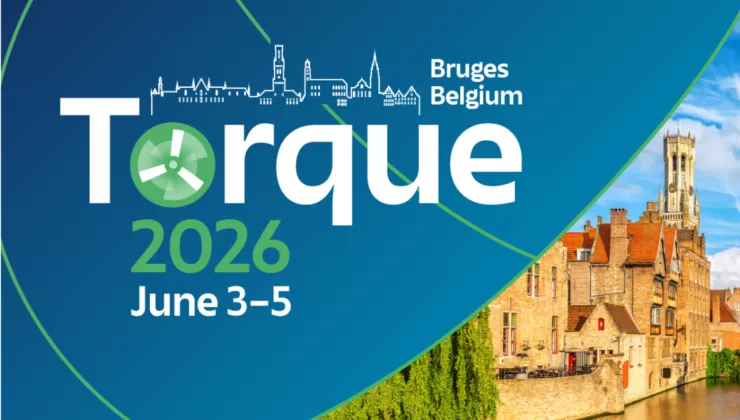Relive Blue Cluster’s activities at G-STIC Dubai
During the G-STIC conference in October 2021, we looked into whether artificial islands can contribute to a sustainable blue economy. Which role can artificial islands and structures play within the 3 functions energy, aquaculture and nature – are they a must have or only nice to have? In the webinar of 18 January we digged deeper in the Energy activity.
Energy islands are emerging in different forms. Why would we need them and how can they potentially contribute to a sustainable blue economy? Even though artificial islands have been controversial for a long time, they are popping up now as important contributors to the carbon neutral transition.
Artificial “blue-green” energy islands could act as power hubs and served several communities and countries. Floating islands and renewable energy could fulfil the promise of ensuring access to affordable, reliable, and sustainable modern energy for all and could support bringing together powerful partnerships and facilitate connections across diverse sectors.
Presentations
A short summary of the presentations can be found below. If desired, you can also download the presentations in full.
Energy islands for the people or islands for the energy people?
Jan Cornillie, 3E
The development of subsidy-free offshore wind energy in the North Sea and the need for interconnections have led to the initiative for an artificial energy island. This highly innovative energy island is attracting a lot of interest.
Important techno-economic questions remain: which value streams will an energy island capture? Who will finance it? How will energy consumers on the mainland and the surrounding islands benefit from such an island? Does such an energy island make sense elsewhere? What would be the alternatives?
In his presentation, Jan Cornillie deals with these various questions both from the perspective of a renewable-dominant energy system and from the perspective of energy consumers on the European islands and mainland.
Manufactured energy islands
Timothy Vanagt, ORG
How to get large scale maritime infrastructures realised? That is the question many infrastructure works face.
Design for Public Value at Sea (D4PV@Sea) is a co-creation methodology to realise large scale maritime infrastructures in seas and oceans worldwide. Implementing a co-creation strategy in the process of designing and engineering large scale infrastructures helps to get the sea of stakeholders on board as well.
Getting stakeholders involved by starting with a joint fact finding can eventually lead to a collaborative vision that includes the ideals, goals and values of the stakeholders. This may in turn result in the creation of a common plan and a social contract that is supported by all.
‘VindØ’- Denmark’s next step as a global leader in offshore wind
Michael Ertmann, CIP (Copenhagen Infrastructure Partners)
The Danish state has announced two energy islands to be constructed: one artificial island in the North Sea and the other in the Baltic Sea, on an existing island called Bornholm.
In his presentation, Michael Ertmann discusses the perspectives of CIP on the energy island concept as well as the market opportunity for energy islands globally, including the export potential related to the learnings in Denmark.
The North Sea will be the European power center of carbon-free electricity with an estimated potential of around 180-200 GW offshore wind capacity. The question is how to make optimal use of this potential.
Environmental impact will be reduced by systematic long-term planning of VindØ instead of a multitude of connections to the shore in an uncoordinated way.
Video message
Belgian Federal Minister of Energy Tinne Van der Straeten was unable to attend the event, but she provided us with a video message.
Panel discussion
The panel discussion was highly interesting, with direct input from the online audience and with Jan Cornilie, Timothy Vanagt, Michael Ertmann and An Stroobandt (Deputy Head of the Cabinet of Belgian Federal Minister of Energy Van der Straeten) in the studio.
We opened the deep dive with a word cloud. Almost everyone refers to ‘future’ and ‘opportunities’ when asked to summarize artificial islands in one word. Environmental concerns (‘nature’) also seem to score high.
Purpose of artificial islands
On the question whether we need to use artificial islands only for energy purposes or for broader blue economic activity, more than three quarters of the public is in favour of blue economy islands.
Jan Cornillie is not against multi-use islands, but believes that energy is probably the primary activity, a clear driver, which shouldn’t be slowed down by integrating other activities as they are clearly less mature and not economically viable. He also asks which activities would be included; for example: for blue tourism you don’t need an artificial islands, there are plenty of natural islands that will be more than happy to welcome tourists.
Michael Ertmann stresses that for the Danish island, multi-use of the island is essential. He points out that the distance to the coast (100km) is an important argument to add other activities as the island becomes a hub to access areas that are not accessible otherwise.
As a conclusion: let’s start with energy and be open to add new activities as they mature.
Function of artificial islands
We move on to the system function of artificial islands. This is clearly energy transformation. As soon as there is an installed capacity of 3GW or more, an artificial island is economically an interesting solution.
The discussion dives deeper into which soft functions (i.e. less profitable functions) should at least be included. Three quarters of the public feel that both nature development and innovation infrastructure are indispensable. 20% think of other activities, but only 5% think that blue tourism has an important role to play on artificial islands.
An Stroobandt elaborates on the importance of nature inclusive design, while Jan Cornillie stresses the importance of life cycle assessment and circular economy. The challenge in the near future is to tackle an energy crisis, at the same time as a climate crisis, at the same time as an environmental crisis. We have to assess all impacts at once to reach real sustainability.
Financial structures
Michael Ertmann points out that private investments by companies have become important as far as financial support of artificial islands is concerned. Jan Cornillie points out that funding big green projects has become feasible as there tends to be more financial capacity for large-scale and green projects. The challenge is to define a mature project.
Timothy Vanagt stresses that besides technical and financial aspects a full process of stakeholder participation is indispensable, which includes also the willingness to adapt the whole project if the outcome of this project points this out.
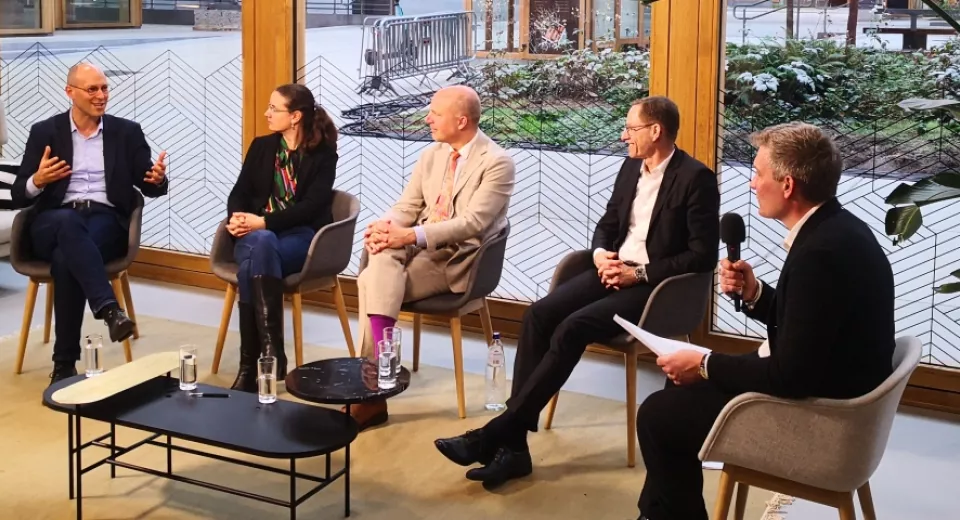
Energy storage
The majority of the audience (90%) believes that energy islands should also play a role in terms of energy storage. Most people see hydrogen (37%) and batteries (32%) as interesting options. A minority thinks that pumped hydro installations might be useful as well.
An Stroobandt is doubtful on the cost for storage. There is no cheap hydrogen production technique at hand. Jan Cornillie asks what the advantage would be to do the storage on the artificial island. Why wouldn’t we transport the energy to land and store it there if needed?
Michael Ertmann points out that in the case of the Danish island, some kind of storage will probably be needed. He points also out that pipelines are much cheaper than cables (difference of a factor 10). If molecules such as hydrogen are used, transport of energy can be more efficient, but we need energy applications that will use directly hydrogen as reconversion to electron is far too inefficient.
Future-proof
Timothy Vanagt subsequently adds a final question: how can artificial islands be made future proof? An Stroobandt thinks this is very important and puts forward that making the concept modular is a possible way to accomplish this.
Jan Cornillie agrees but says that making something modular is never a solution as such, referring to the small and modular new generation nuclear power plants. Michael Ertmann confirms that for the Danish island the development will be modular, starting with a limited transmission capacity that can modularly be increased up to 10 GW.
The moderator ends the discussion with some questions of the public, relating to the place the energy island in Belgium will take in the overall energy strategy. An Stroobandt explains the importance of the energy island in the light of future wind farm development and in the framework of energy connections with other North Sea countries.
Blue Cluster would like to thank all speakers and the audience for their enthusiastic participation in this event.
